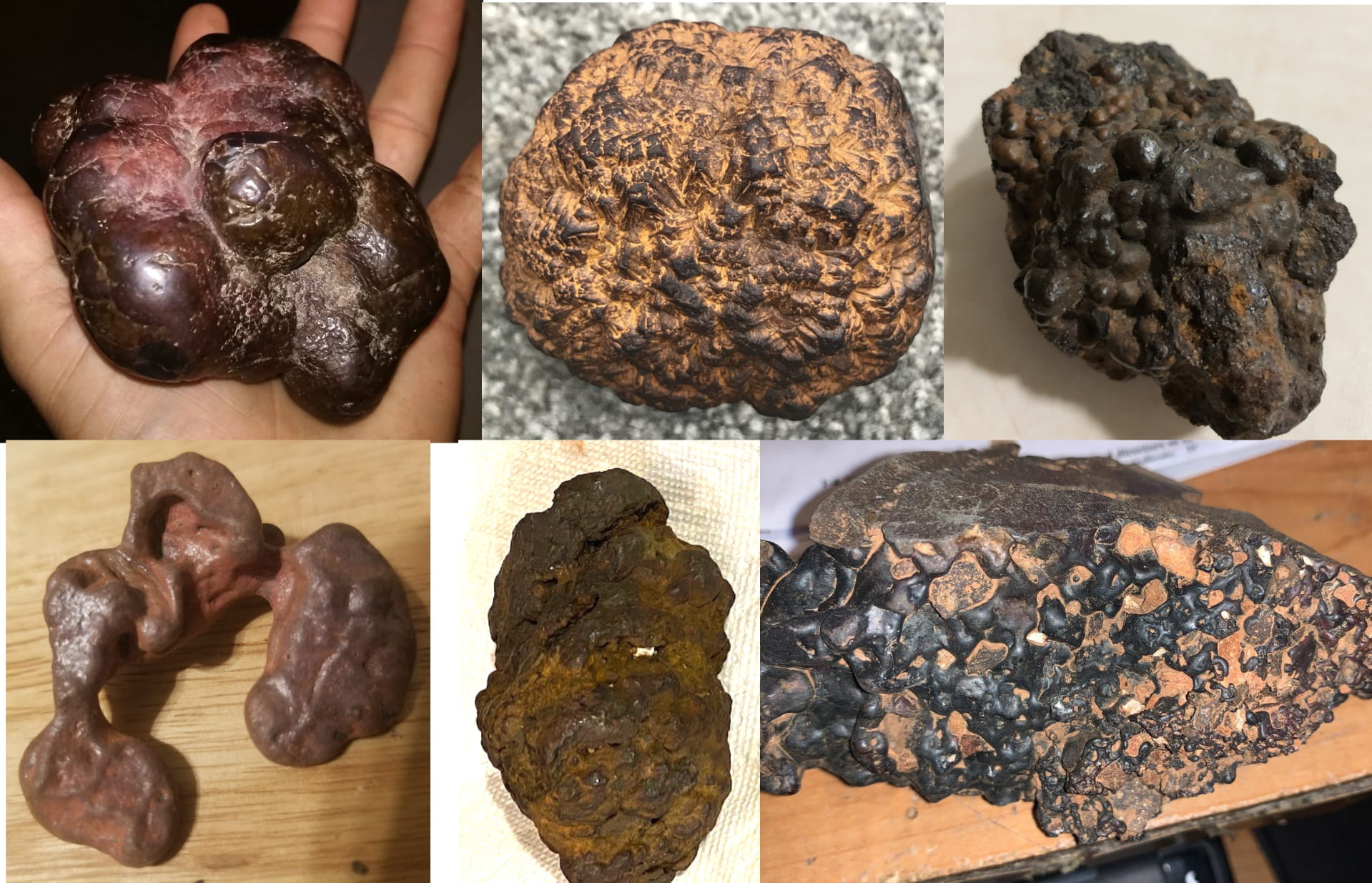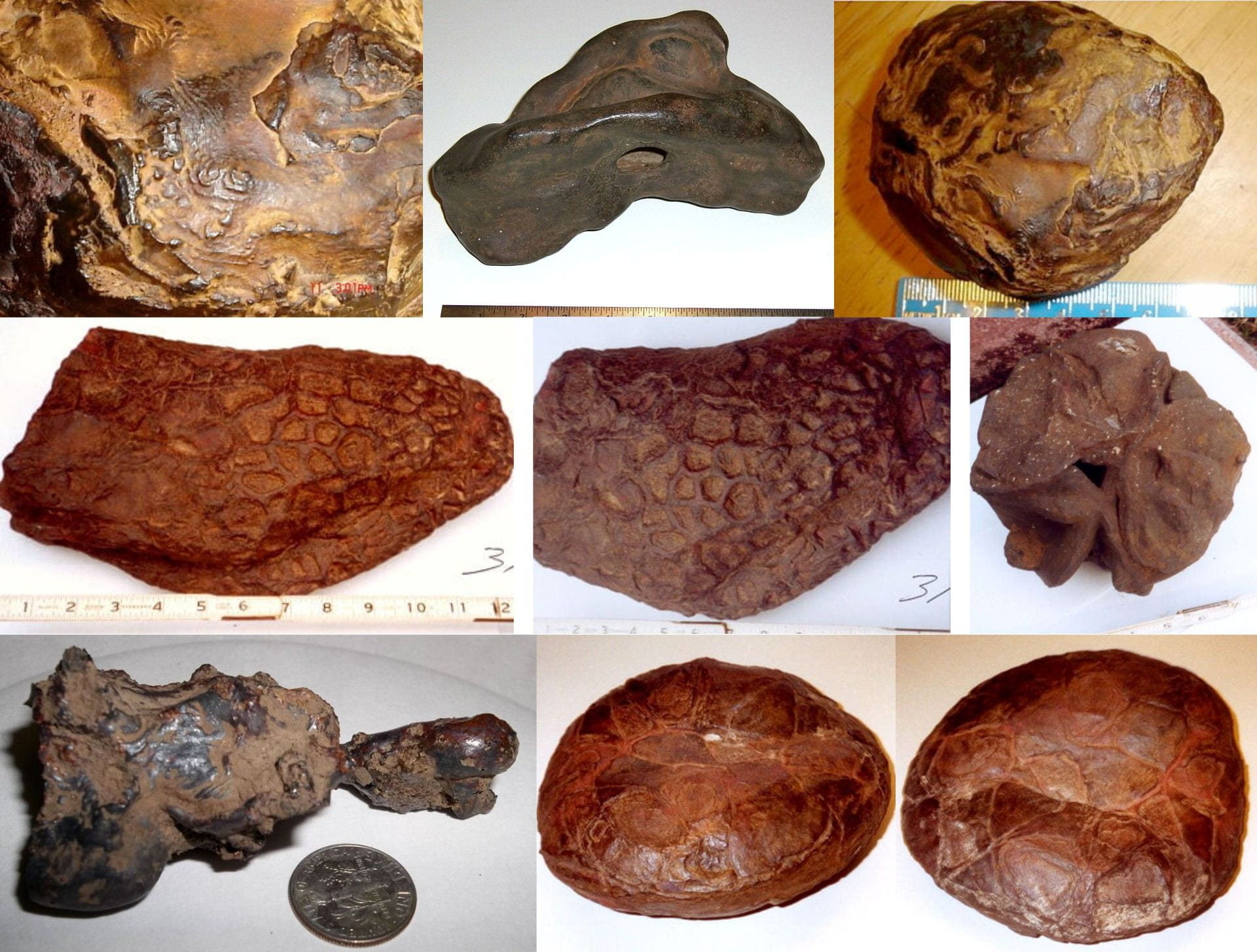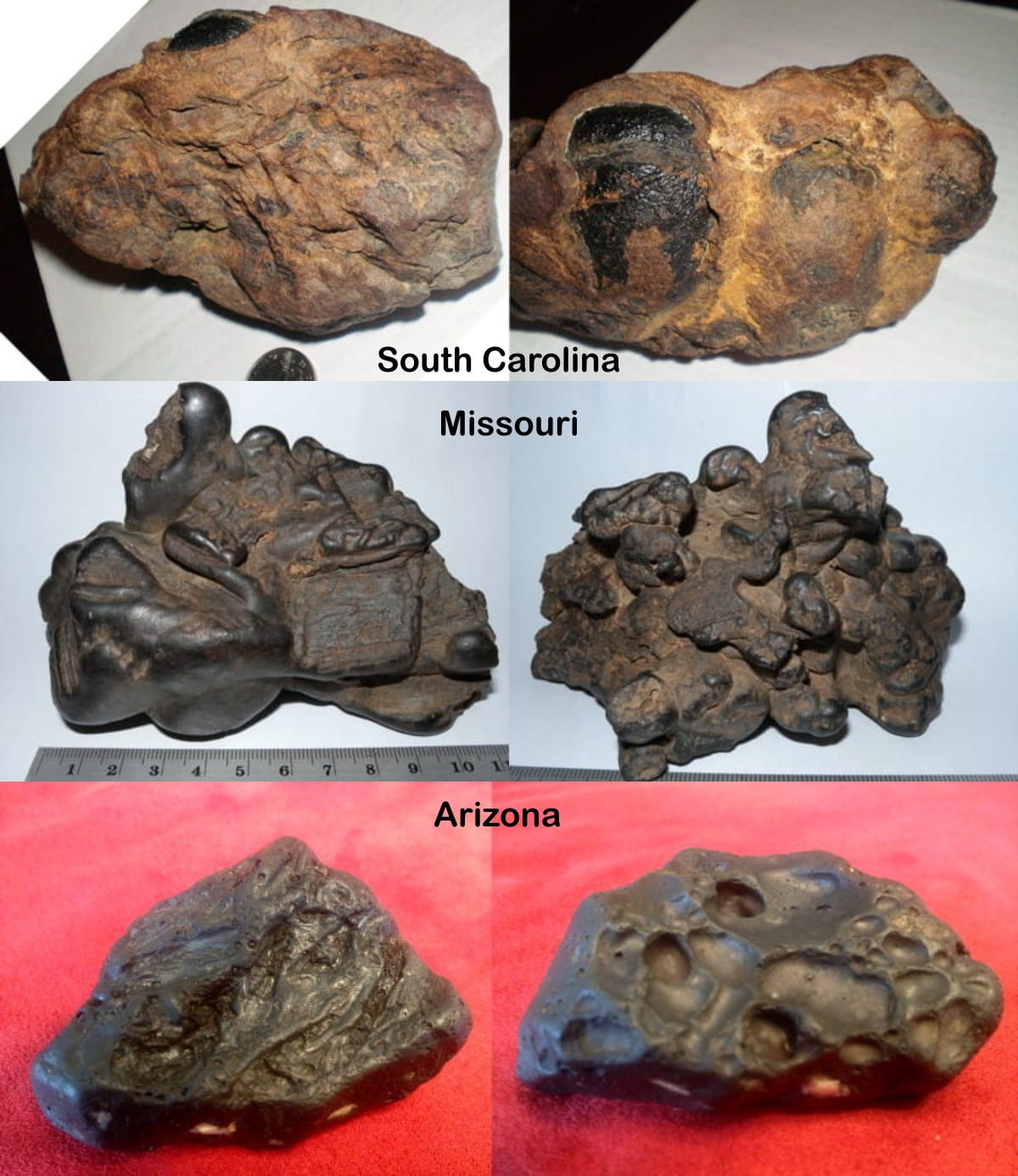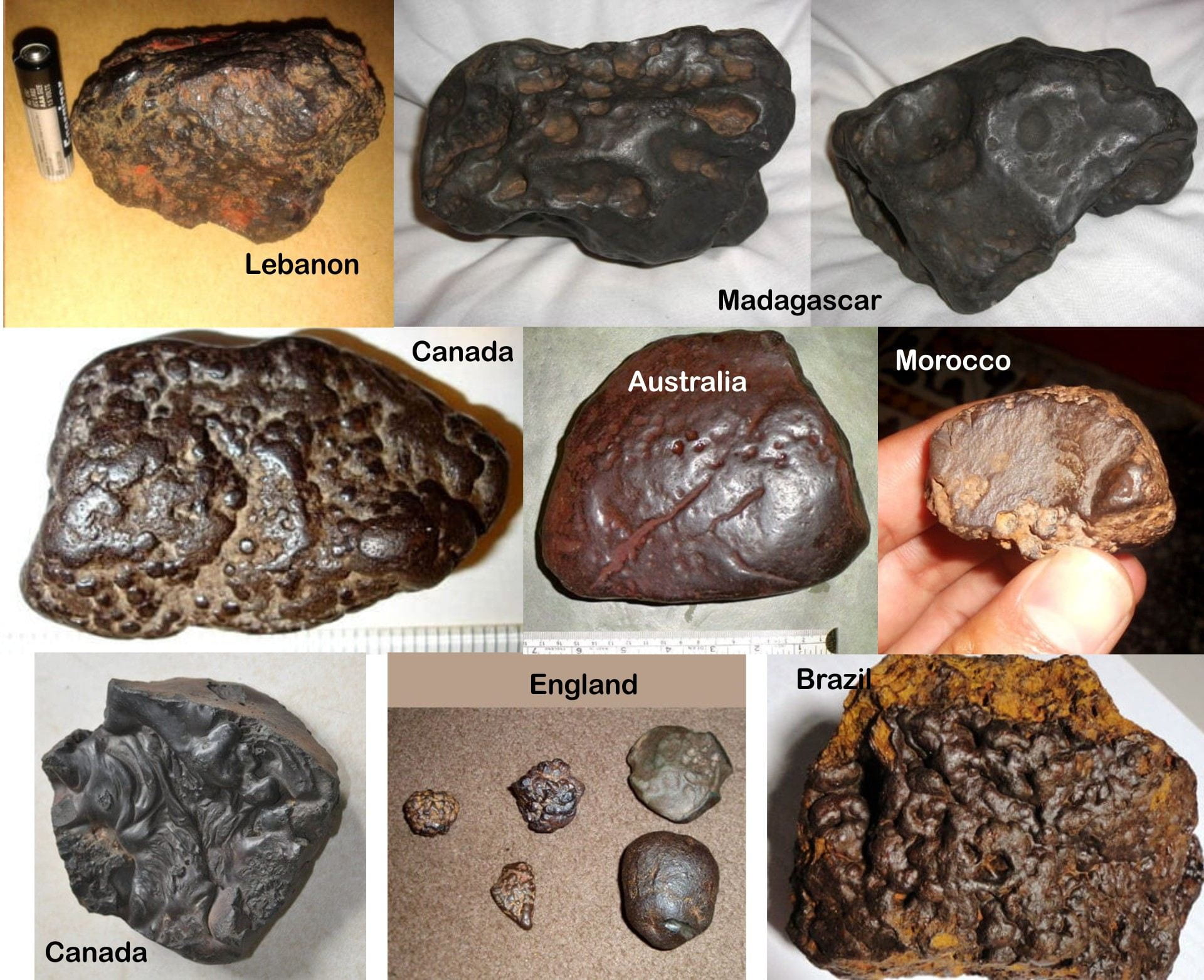Iron-oxide concretions and nodules 1
 Iron-oxide nodules or concretions are the most common kind of meteorwrong sent to us. Hematite and magnetite are two common iron-oxide minerals. Most iron ore deposits consist mainly of hematite, magnetite, or both. Iron-oxide concretions, iron-oxide nodules, and ironstones are often mistaken for meteorites because they are heavy (dense) and their unusual (frequently bizarre!) shapes catch people’s attention.
Iron-oxide nodules or concretions are the most common kind of meteorwrong sent to us. Hematite and magnetite are two common iron-oxide minerals. Most iron ore deposits consist mainly of hematite, magnetite, or both. Iron-oxide concretions, iron-oxide nodules, and ironstones are often mistaken for meteorites because they are heavy (dense) and their unusual (frequently bizarre!) shapes catch people’s attention.
Hematite concretions form by precipitation of iron oxide from iron-rich solutions. Hematite nodules are often formed in sedimentary rocks like limestone by oxidation of pyrite or marcasite (iron sulfide) crystals. Concretions and nodules, which may also be composed in part of the iron oxy-hydroxides such as limonite and goethite, come in a wide variety of shapes. Sometimes they are shiny on the surface, which might give the impression of a meteorite fusion crust. Note that while pure hematite is rich in iron, it does not attract a simple magnet. Magnetite, on the other hand, is highly attracted to a magnet, and it often forms nodules, too. In rocks highly rich in magnetite-hematite nodules, some parts of the the rock may attract a magnet and other parts may not.
Hematite is easy to identify because it makes a red streak. Also, hematite concretions are denser (heavier for their size) than any kind of stony meteorite or most other kinds of Earth rocks. For example, the specific gravity of an ordinary chondrite (the most common kind of meteorite) is about 3.9 whereas the specific gravity of a hematite concretion is 4-5. Magnetite (often blackish) has similar a specific gravity. Note that hematite concretions and magnetite often look metallic when cut in two. The sawn surface can look very shiny, especially when wet. Neither conducts electricity, however.
Nearly all the photos presented here were sent to me by the people who found the rocks. Iron oxide concretions are dark, and in the process of “improving” some of these photos, I may have changed the color. Not all of these rocks are, technically, concretions or nodules, but all are rich in iron-oxide minerals.







